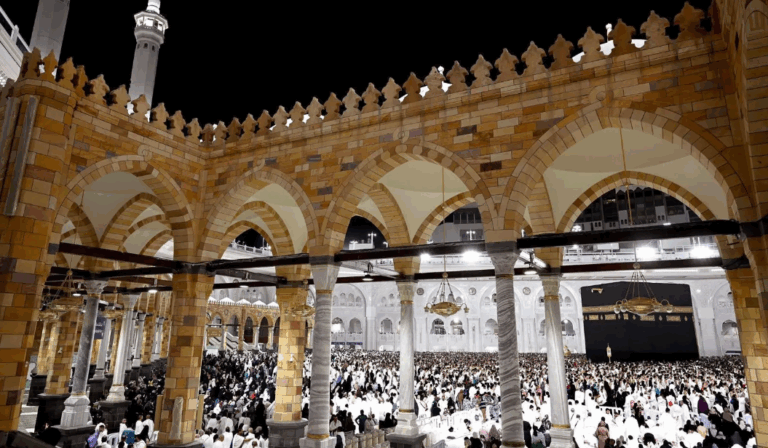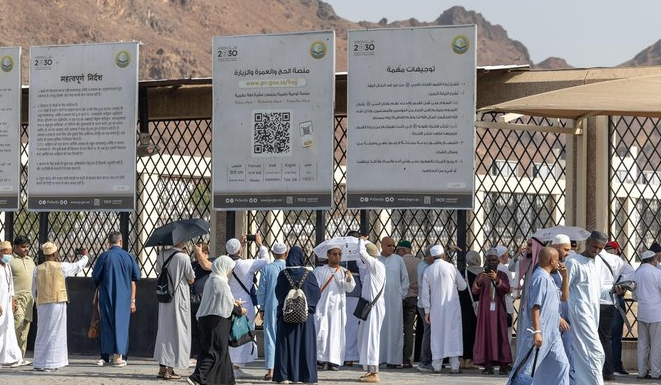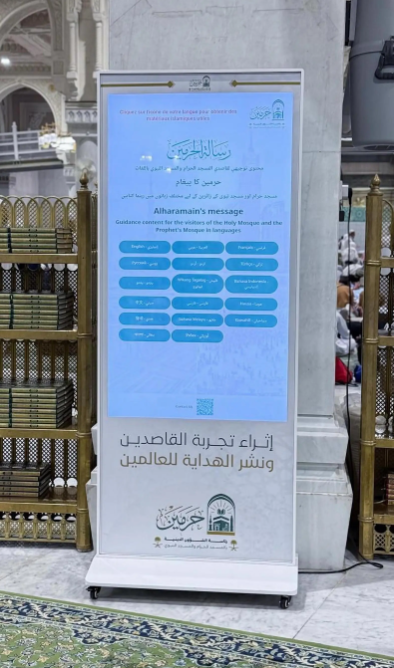**Título:** *Jizan Pottery: Heritage in Clay*
**Intro:** For centuries, Jazan’s pottery artisans have transformed local clay into functional and artistic treasures, deeply intertwined with the region’s culture. Their creations not only preserve ancient techniques but also enhance iconic dishes like *mandi*. Facing modern challenges, revitalization efforts aim to safeguard this craft for future generations.
**Factbox (49 palabras):**
– **Location:** Jazan, Saudi Arabia
– **Materials:** Local clay from arid valleys
– **Cultural Role:** Enhances traditional dishes (*madhbi, mandi*)
– **Challenges:** Declining artisans, scarce clay sources
– **Initiatives:** Training programs, cultural festivals
**Jizan’s Pottery: A Timeless Craft Weaving Culture, Tradition, and Flavor**
**Introduction**
In the sun-drenched valleys of Jazan, a centuries-old tradition thrives, shaping not just clay but the very identity of southern Saudi Arabia. Jizan’s pottery industry is a living archive of cultural heritage, where artisans transform earth into art, functionality, and storytelling. Beyond its aesthetic appeal, this craft is a bridge between past and present, offering a tactile connection to the region’s history and culinary soul.
**The Legacy of Jazani Pottery: Masters of Earth and Fire**
For over a millennium, Jazan’s potters have harnessed the region’s unique clay, sourced from mineral-rich valleys, to craft pieces as durable as they are beautiful. The process begins with *al-teen al-Jazani* (Jazan clay), kneaded and purified to remove impurities, then shaped using techniques passed down through generations. Artisans employ methods like hand-coiling and open-fire kilning, often burning acacia wood to achieve temperatures that harden the clay into resilient vessels.
Each piece tells a story: geometric patterns inspired by Asir Mountains, motifs echoing ancient Himyarite scripts, or utilitarian designs tailored for daily use. From *qidr* (cooking pots) to *jirbah* (water jars), these items are testaments to a craft refined by necessity and pride.
**Cultural Significance: Where Pottery Meets Palate**
Jazani pottery is inseparable from the region’s culinary identity. The clay’s porous nature allows slow, even heat distribution, making it ideal for *madhbi* and *mandi*—dishes where smoky, aromatic flavors are locked in. Locals swear that meat cooked in traditional clay pots retains a tenderness unmatched by modern cookware. Similarly, *hanin* (clay mugs) are believed to enhance the taste of spiced Jazani coffee, served during gatherings as a symbol of hospitality.
Beyond the kitchen, pottery plays a role in rituals. Brides receive hand-painted vessels as dowries, and festivals feature ceremonial jars filled with dates or honey, symbolizing abundance. These traditions underscore pottery’s role as a cultural linchpin, binding communities through shared practices.
**Challenges: A Craft at a Crossroads**
Despite its resilience, Jazan’s pottery faces existential threats. Urbanization lures younger generations away from labor-intensive traditions, while synthetic materials like plastic undercut demand for handmade goods. Environmental shifts and overharvesting have depleted clay sources, forcing artisans to travel farther for raw materials.
“My grandfather taught me this craft, but my children see no future in it,” laments Ahmed Al-Harthi, a third-generation potter. Workshops have dwindled from dozens to a handful, with master artisans aging and few apprentices to continue their legacy.
**Revival: Stitching the Threads of Heritage**
Hope emerges through collaborative efforts. The Saudi Heritage Commission, alongside local cooperatives, has launched initiatives like *Mashrou Al-Fakh* (“Pride Project”), offering grants to potters and modernizing workshops with energy-efficient kilns. Training centers in Sabya and Abu Arish teach not only traditional techniques but also entrepreneurial skills, empowering artisans to market their wares online.
Cultural festivals, such as the annual *Jizan Winter Festival*, now spotlight pottery through live demonstrations and interactive workshops. Tourists mold clay alongside masters, taking home pieces etched with their names—a fusion of memory and craftsmanship.
Innovative collaborations are also breathing new life into the craft. Designers from Riyadh’s Nun Studio partner with potters to create contemporary home décor, blending minimalist aesthetics with ancestral patterns. These pieces, sold in urban boutiques, introduce Jazani pottery to a global audience.
**Conclusion: Crafting the Future, One Vessel at a Time**
Jizan’s pottery is more than art; it’s a dialogue between earth, hands, and history. As revival efforts gain momentum, the craft evolves without losing its soul—a metaphor for Jazan itself, balancing tradition and progress. By supporting these artisans, we preserve not just pots and pans, but the stories, flavors, and resilience of a region. In the words of a local proverb: *“A vessel shaped by patience holds the deepest waters.”* For Jazan, patience and passion may yet ensure this ancient craft endures for centuries to come.
**FAQs About Jizan’s Pottery Industry**
1. **What makes Jizan’s pottery a significant cultural heritage?**
Jizan’s pottery reflects centuries-old traditions, embodying the region’s history and environmental adaptability through functional and artistic designs that preserve the stories and ingenuity of its people.
2. **How does local clay from Jizan enhance pottery quality?**
The region’s clay, sourced from arid valleys, is prized for its durability and porous nature, which improves heat distribution during cooking, enriching the flavors of traditional dishes like *madhbi* and *mandi*.
3. **How do Jazani artisans learn their craft?**
Skills are passed down through generations, with recent initiatives like training programs by cultural organizations ensuring knowledge transfer to younger artisans to sustain the craft’s legacy.
4. **What are the primary uses of Jizan’s pottery?**
Beyond aesthetics, pottery serves practical roles in daily life, including cooking vessels, storage containers, and serving dishes that align with local culinary traditions and rituals.
5. **Why does Jazani pottery improve traditional dish flavors?**
The clay’s porosity allows even heat absorption and retention, enhancing slow-cooked dishes by locking in aromas and creating a distinct texture unachievable with modern cookware.
6. **What challenges threaten Jizan’s pottery industry today?**
Declining artisan numbers, reduced clay sources due to environmental changes, and competition from mass-produced alternatives risk eroding this centuries-old craft.
7. **How is Jizan preserving its pottery heritage?**
Authorities host cultural festivals to showcase pottery, fund artisan training programs, and promote tourism to raise awareness and ensure economic and cultural sustainability.
8. **What economic role does pottery play in Jizan?**
It supports local livelihoods, attracts tourism, and fosters cultural entrepreneurship, contributing to both the regional economy and heritage conservation efforts.
9. **Is Jizan’s clay sourcing environmentally sustainable?**
Diminishing natural clay sources pose concerns, prompting studies to balance traditional practices with ecological preservation and explore alternative materials where feasible.
10. **How does pottery reflect Jazan’s cultural identity?**
Each piece symbolizes the region’s history, environmental landscape, and communal values, acting as a tactile connection to ancestral lifestyles and artistic expression.
11. **How does Jazani pottery differ from other regions’ ceramics?**
Unique clay composition, traditional designs rooted in local culture, and specialized cooking applications distinguish it from pottery elsewhere in Saudi Arabia or the Gulf.
12. **Can visitors purchase authentic Jazani pottery?**
Yes, cultural festivals, artisan workshops, and heritage markets offer handcrafted pottery, with proceeds often supporting craft preservation and local communities.
13. **How has globalization impacted Jizan’s pottery traditions?**
While modern alternatives challenge demand, globalization has also amplified international interest, creating opportunities for cultural exchange and niche market growth.
14. **What is the future outlook for Jizan’s pottery industry?**
With revitalization efforts, the craft is poised to endure, blending traditional techniques with contemporary innovations to appeal to new generations and global audiences.
15. **Are there pottery-making experiences for tourists in Jizan?**
Cultural festivals and workshops often include live demonstrations and hands-on sessions where visitors can learn basic techniques and create their own clay pieces.
**CTA (Call to Action):**
Discover the timeless artistry of Jazan’s pottery for yourself! Plan a visit to Jazan’s workshops, support local artisans by purchasing their handcrafted pieces, or share this story to spread awareness about this cultural treasure. Follow #JazanPottery on social media to stay updated on festivals and initiatives preserving this heritage. Together, we can ensure these traditions thrive for generations to come.
**Conclusion:**
Jizan’s pottery is more than clay and craftsmanship—it is a living narrative of resilience, identity, and community. As modernization challenges age-old traditions, the collective efforts to sustain this art form reflect a profound commitment to honoring the past while shaping the future. By valuing these practices, we safeguard not just a craft, but the soul of a region whose stories are etched into every hand-shaped vessel.
**Gratitude:**
Thank you for taking the time to explore the rich heritage of Jazan’s pottery with us. Your interest and support play a vital role in keeping these traditions alive. Let’s continue celebrating the artisans who bridge history and modernity with their unwavering passion and skill.
—
*¿Te gustó este artículo? Suscríbete a nuestro boletín para más historias culturales y únete a la conversación en los comentarios abajo!*
*(Did you enjoy this article? Subscribe to our newsletter for more cultural stories and join the conversation in the comments below!)*









